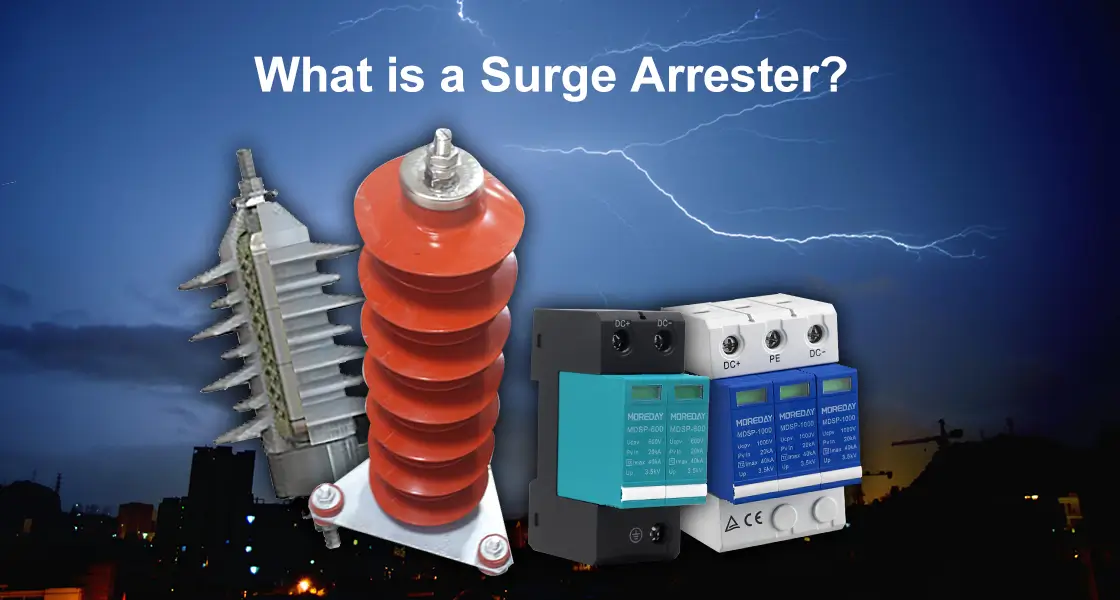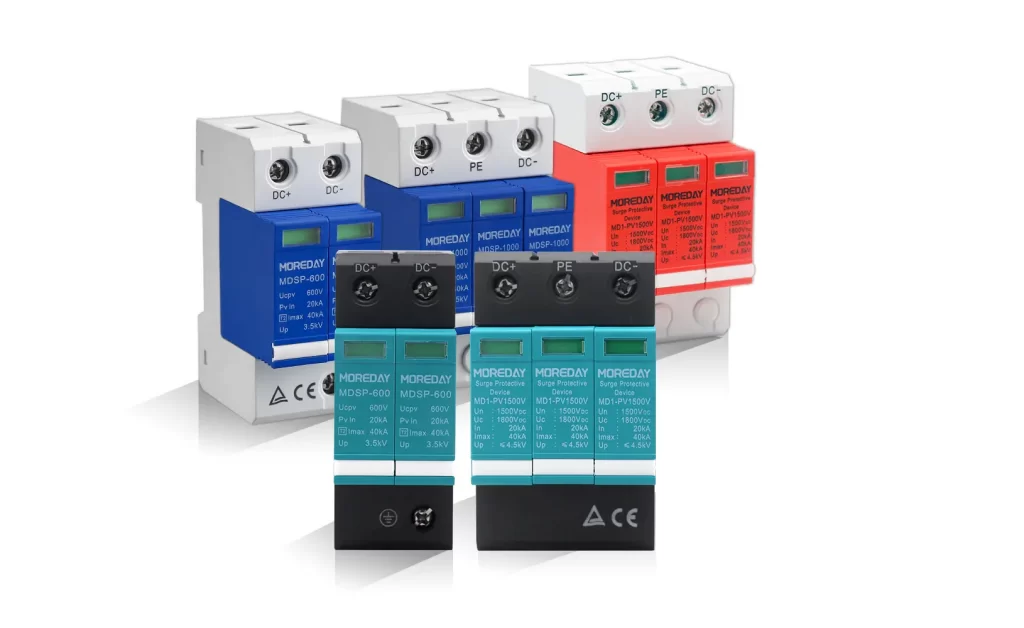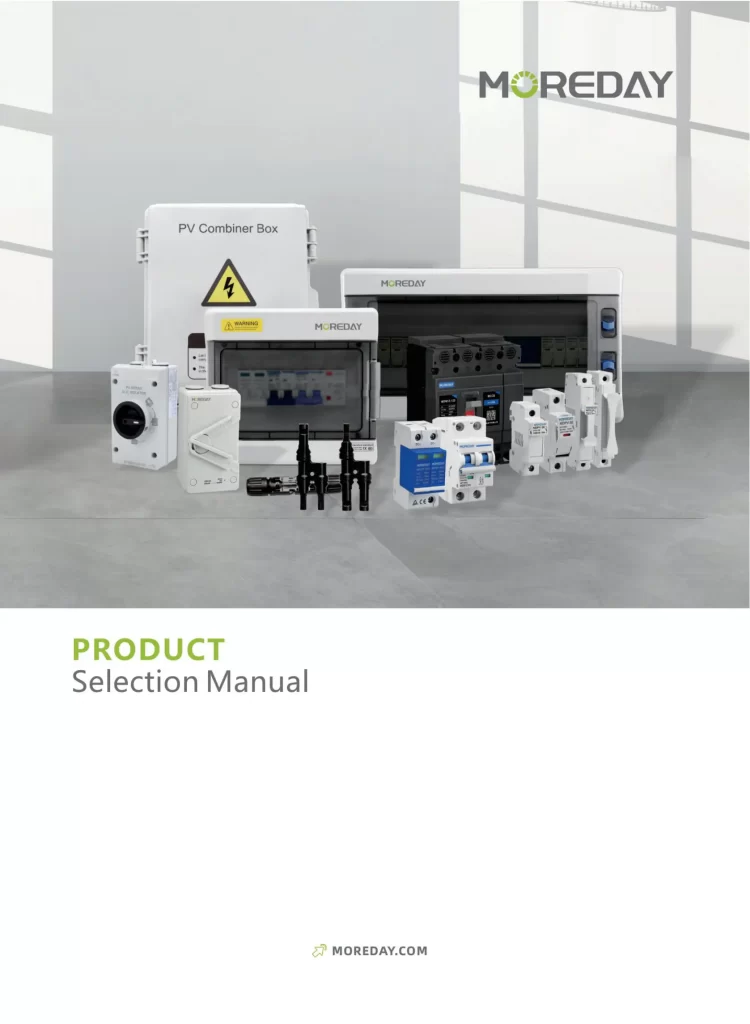Introduction
Welcome to our comprehensive guide on lightning arresters! In this article, we will delve into the world of surge protection device and explore their vital role in protecting electrical systems from voltage surges.
As technology continues to advance and our reliance on electronic devices grows, the need for effective surge protection has become more important than ever. It, also known as a surge protection device (SPD), is a critical component in safeguarding our electrical equipment from the damaging effects of voltage surges caused by lightning strikes or switching events.
But what exactly is and how does it work? We will explore these questions in detail, shedding light on the inner workings of arrestors and their ability to divert or clamp high-voltage surges to protect our valuable electronic devices.
Furthermore, we will discuss the different types of lightning arresters available on the market, ranging from secondary arresters to distribution, intermediate, and station-class arresters. Each type has its own unique characteristics and applications, ensuring that there is an arrester suitable for every electrical system.
We will also highlight the benefits, emphasizing their crucial role in preventing damage to electrical equipment and ensuring the smooth operation of power systems. Additionally, we will provide insights into the installation and maintenance, offering practical tips for homeowners and businesses alike.
So, whether you are a homeowner looking to protect your valuable electronics or an electrical professional seeking a deeper understanding of lightning arresters, this guide is your go-to resource. Join us as we unravel the mysteries and empower you to make informed decisions when it comes to protecting your electrical systems.

What is a Lightning Arrester?
Also known as a surge protection device (SPD) or voltage surge suppressor (TVSS), is a crucial component in safeguarding electrical systems from voltage surges and power-related irregularities. These surges can be caused by external factors like lightning strikes or internal events such as switching overvoltages. They work by “arresting” or discharging surge currents, preventing them from reaching and damaging other electrical equipment.
Unlike lightning arresters, which are installed outdoors, are typically installed indoors. They provide a layer of protection for appliances and electronic devices by diverting or clamping excessive voltages, ensuring that they do not enter the system. This protection is vital because voltage fluctuations can lead to malfunctions, damage, or even the complete failure of electrical devices.
Lightning arresters operate by utilizing components such as spark gaps and metal oxide varistors (MOVs). The spark gap provides a low-resistance path for unwanted current to flow through, while MOVs absorb excess energy by acting as resistors when exposed to high voltages.
There are various types of available, including secondary arresters, station class arresters, distribution arresters, and residential arresters. Each type is designed to provide specific levels of protection based on voltage ratings and application requirements.
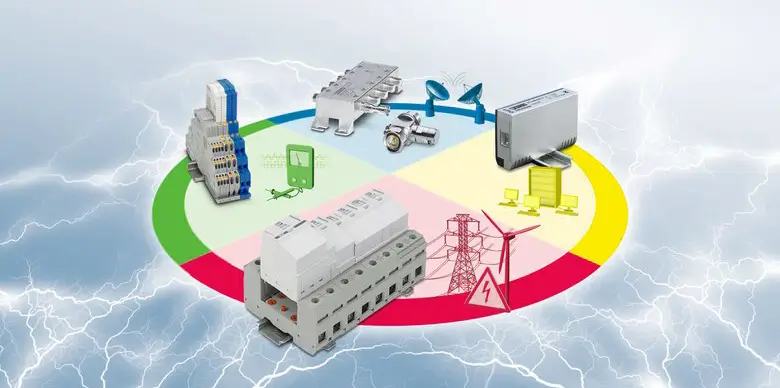
By installing these protectors, electrical systems can be shielded from the damaging effects of voltage surges, reducing the risk of equipment failure, costly repairs, and downtime. These devices offer peace of mind, knowing that valuable electronics and appliances are protected from sudden power disturbances and potential damage caused by lightning strikes or other power surges.
It is essential to choose the right product for specific applications and ensure proper installation and maintenance to maximize their effectiveness. They are a critical investment in maintaining the safety, reliability, and longevity of electrical systems.
How Surge Arrestors Work?
Which play a crucial role in protecting electrical systems from the damaging effects of voltage surges. But how do these devices actually work?
When a surge or spike in voltage occurs, they act as a barrier, diverting the excess energy away from sensitive equipment and preventing it from causing damage. They accomplish this through the use of specialized components, such as metal oxide varistors (MOVs) and spark gaps.
Metal oxide varistors are semiconductors that have a high resistance to current flow at normal voltages but become conductive when exposed to high voltages. When a surge is detected, the MOVs quickly absorb the excess energy by diverting it to the ground, protecting the connected electrical system.
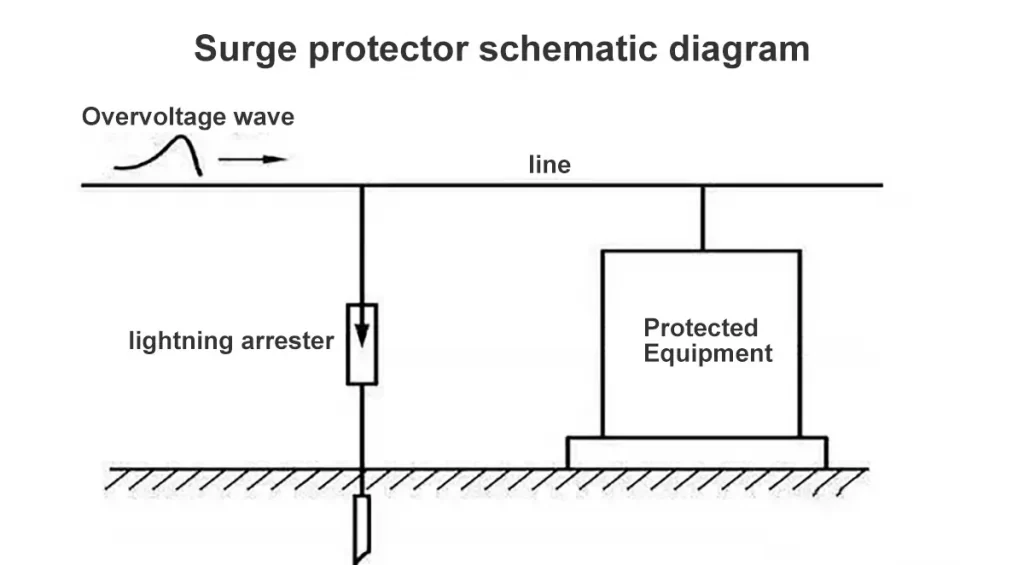
Spark gaps, on the other hand, provide a low-resistance path for the surge current to flow through. When the voltage exceeds a certain threshold, the spark gap activates and conducts the surge current away from the sensitive equipment, preventing damage.
By combining these components, lightning arresters are able to effectively protect electrical systems from voltage surges caused by lightning strikes, power line faults, or other unexpected events. They provide a vital layer of defense, ensuring the safe and reliable operation of electrical equipment.
It is important to note that are not a one-time solution. They need to be regularly inspected and maintained to ensure their effectiveness. By following proper installation and maintenance procedures, they can continue to provide reliable protection for years to come.
Types of lightning arrestors
Coming in various types, each designed to provide protection against different types of surges and overvoltages. Here are some of the most common types:
Station Class Arresters
Station Class Arresters: These arrestors are specifically designed to protect high-voltage power systems, such as transformers and circuit breakers, from lightning strikes and switching surges. They offer the highest discharge voltages and can handle the highest fault currents. Station-class arresters are available in voltage ratings ranging from 3 kV to 684 kV.

Distribution Arresters
Distribution Arresters: Distribution arresters are used in medium voltage networks and are typically installed in transformers and other equipment. They provide protection against lightning strikes and surges, but with lower protective capabilities compared to station class arresters. Distribution arresters are available in voltage ratings ranging from 1 kV to 36 kV.
Secondary Arrester
Secondary Arrester: Secondary arresters are used to protect low-voltage systems, typically below 1000V. They are commonly employed in residential and commercial buildings to protect electrical devices from secondary surges. Secondary arresters help reduce the failure rate of transformers caused by low-side surges.

Intermediate Arresters
Intermediate Arresters: Intermediate arresters offer better discharge voltages and higher fault current resistance compared to distribution arresters. They are commonly used in small substations and underground cable protection. Intermediate arresters have voltage ratings ranging from 3 kV to 120 kV.
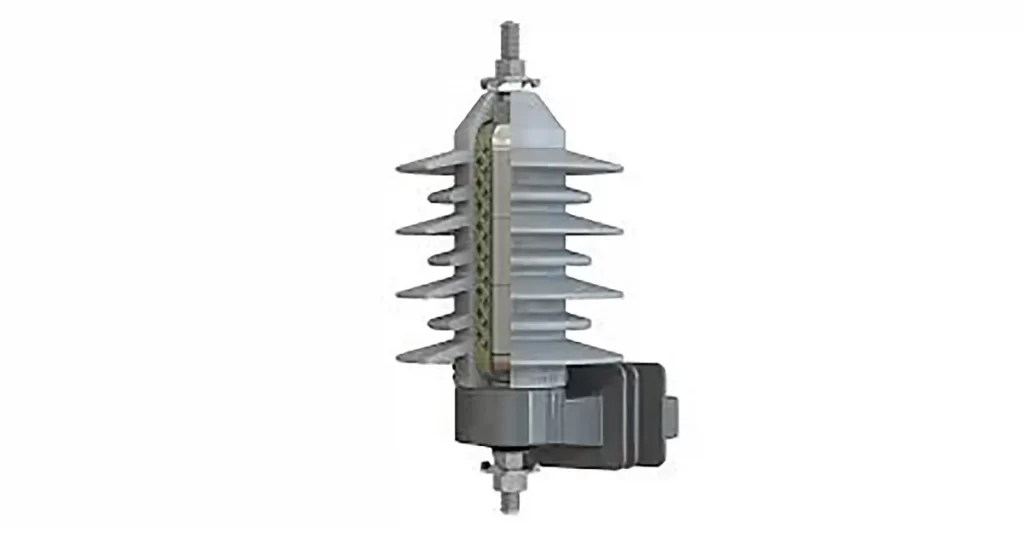
These are just a few examples of the types of surge protection available in the market. Each type is designed to meet specific voltage and current requirements, ensuring effective protection against surges and overvoltages. It is important to choose the right type of lightning arrestor based on the specific needs of your electrical system to ensure optimal protection.
Benefits of Lightning Arresters
An essential component of electrical systems, providing valuable protection against voltage surges. By diverting excess energy away from sensitive equipment, surge arrestors prevent damage and ensure the longevity of electrical devices. Here are some key benefits of using devices:
Protection from Voltage Surges: Safeguard electrical systems from voltage spikes caused by lightning strikes, power line faults, or other unexpected events. By diverting excess current to the ground, lightning arresters keep the voltage at a safe level, preventing damage to connected devices.
Increased Equipment Lifespan: Voltage surges can significantly reduce the lifespan of electrical equipment. They help extend the lifespan of devices by preventing damage from high voltage transients. This reduces the need for frequent repairs or replacements, saving both time and money.
Improved System Reliability: By protecting equipment from damage, It can contribute to the overall reliability of electrical systems. Unplanned downtime due to equipment failure can be costly and disruptive. Lightning arresters help minimize the risk of such failures, ensuring uninterrupted operation.
Enhanced Safety: Voltage surges can pose safety hazards, such as electrical fires or electrocution. Surge arrestors mitigate these risks by diverting excess energy away from sensitive components. This helps create a safer working environment for both individuals and equipment.
Cost Savings: Investing in surge arrestors can lead to long-term cost savings. By preventing damage to electrical equipment, surge arresters reduce the need for costly repairs or replacements. Additionally, the enhanced reliability of electrical systems can result in improved productivity and efficiency.
In conclusion, lightning arresters offer numerous benefits, including protection from voltage surges, increased equipment lifespan, improved system reliability, enhanced safety, and cost savings. These devices are a crucial component of electrical systems, providing peace of mind and ensuring the smooth operation of critical equipment.
Installation and Maintenance of Lightning Arresters
Installing is a crucial step in protecting electrical systems from voltage surges. To ensure the effective functioning of lightning arresters, proper installation and regular maintenance are essential.
During installation, you should be placed near the electric meter to defend the electrical system from external power surge effects. This placement protects other electrical devices connected to the power source. However, it is important to note that lightning arrestors cannot provide complete protection from surges caused by defective wiring or overall malfunctions of electrical appliances.
Regular maintenance is necessary to ensure their optimal performance. This includes checking for any sealing defects or moisture ingress, as these factors can lead to arrester failure. It is also important to monitor the discharge operation counters of surge arrestors with a voltage rating above 52 kV.
To maintain the effectiveness, it is recommended to follow the manufacturer’s guidelines for maintenance intervals and procedures. Regular inspections and testing should be carried out by qualified professionals to detect any potential issues and ensure the continued protection of the electrical system.
In summary, proper installation and regular maintenance are crucial for the effective functioning of lightning arresters. By following recommended guidelines and conducting routine inspections, homeowners and businesses can ensure the longevity and reliability of their surge protection systems.
Derek Ke
Hey, I’m Derek Ke, the founder of Moredaydc.com, an expert in solar electrical products and ev charging.
In the past 15 years, we have helped 60 countries and nearly 500 customers (such as farms, residences, industrial and commercial) solve new energy and green power problems. This article aims to share more knowledge about solar electricity and new energy with everyone, so that green electricity can enter every home.
Common Queries
Frequently Asked Questions
please feel free to contact us.
A: It is a protective device designed to limit the voltage levels on an electrical circuit by diverting excessive voltage to the ground.
A: They are crucial because they safeguard electronic equipment and appliances from damage caused by voltage surges, which can result from lightning strikes, power grid fluctuations, or other electrical disturbances.
A: It works by providing a low-resistance path to divert excess voltage away from sensitive electrical components. When voltage levels exceed a certain threshold, conducts the excess energy safely to the ground.
A: Voltage surges can originate from lightning strikes, power outages, switching operations, and other sudden changes in the electrical grid.
A: Yes, they are highly effective in protecting against lightning-induced voltage surges. They provide a direct path for the lightning’s energy to dissipate safely.
A: Any electronic equipment or appliances connected to an electrical system can benefit from surge protection. This includes computers, televisions, refrigerators, HVAC systems, and more.
A: Which have a finite lifespan, and they may need to be replaced after a certain number of surges or over a specific period. Regular inspections and maintenance are recommended to ensure optimal performance.
A: Yes, they can be installed in a wide range of settings, including residential, commercial, and industrial environments. They are essential for protecting sensitive electronic equipment in all types of facilities.
A: Yes, there are various types of arresters, including gas discharge arresters, metal oxide varistors (MOVs), and silicon avalanche diode (SAD) arresters. Each type is designed for specific applications and voltage ranges.
A: Surge protection devices (SPDs) work in conjunction with surge arresters to provide comprehensive protection against transient voltage spikes. They are installed at different points in an electrical system to safeguard against various types of surges.
A: While they primarily protect against voltage surges, they indirectly contribute to fire prevention by reducing the likelihood of electrical overloads that can lead to overheating and fires.
A: It is recommended to consult with a qualified electrical engineer or technician who can assess the specific requirements of your electrical system and recommend the most suitable surge arrestor.
Make Electricity Available To All People

